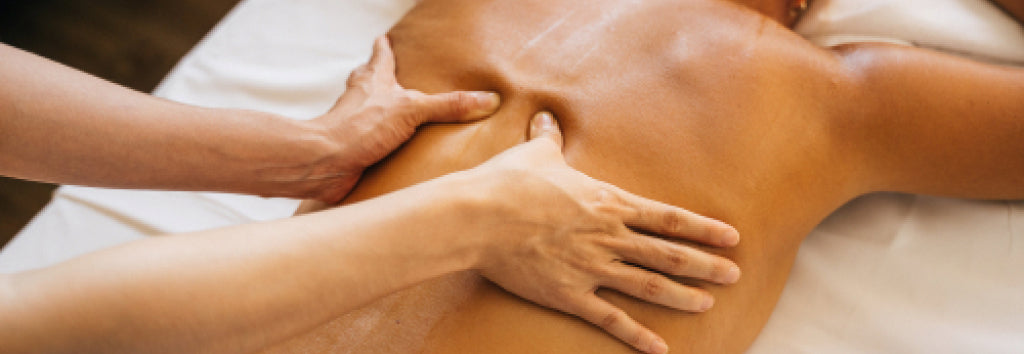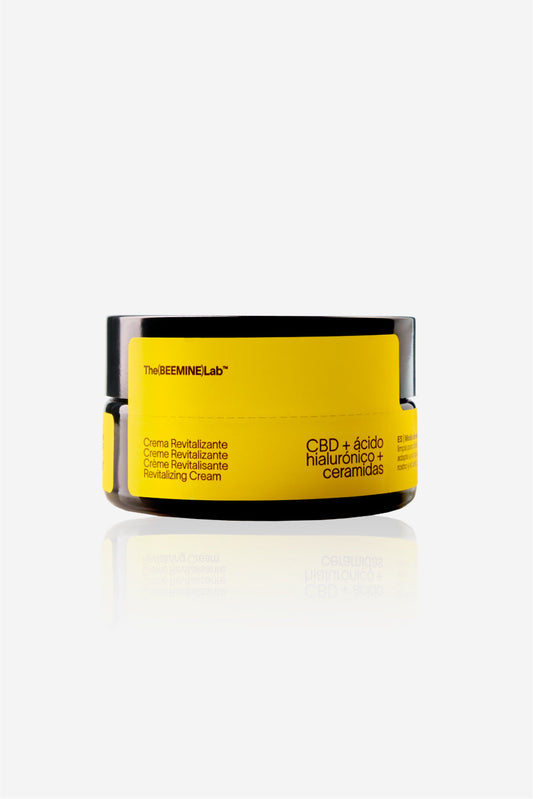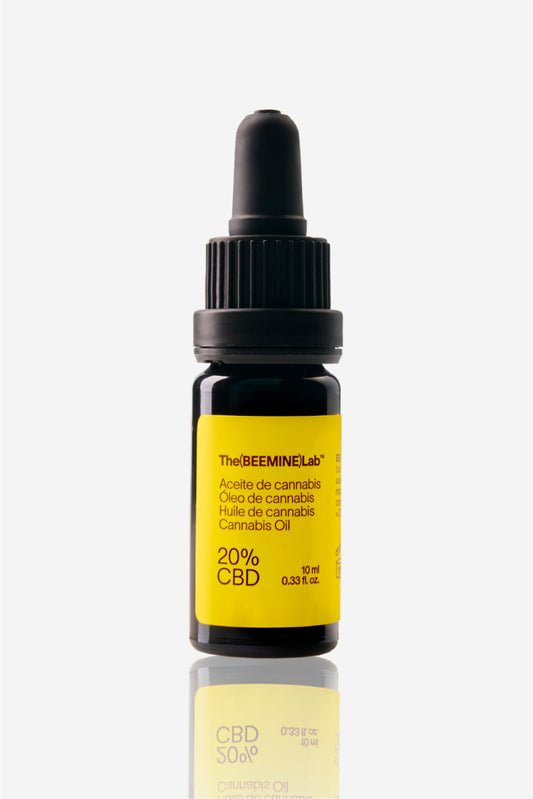What is the best CBD oil for massages?
One of the most common ways to use CBD oil for massages is through external application , and it is also the only regulated form of use in European countries. Through the topical route, CBD oil does not enter the bloodstream and is therefore not systemic, but is concentrated in the area of application and in the most superficial parts of the body , such as the skin, muscles and joints. Thanks to the advantage of being able to be applied at the necessary time and directly to the area of the body to be treated, the external application of CBD oil represents a good option both to treat problems in the most superficial areas of the body mentioned above and to complement an internal sublingual or ingestible treatment with CBD or other substances or drugs. Absorption through the skin is more complex and limited than through internal administration , so it is not necessary to use high concentration CBD oils or in large quantities. To optimize the bioavailability of topical application, it is necessary to perform gentle massages that allow complete absorption and allow the CBD oil to overcome the epidermal barrier to access deeper layers of the integumentary system. In addition, there are some natural components that may be present in CBD oil and increase its permeability. (6-7)
What are the benefits of CBD oil for massages?
External application favours more limited effects compared to the internal route , since it only influences the endocannabinoid receptors present in the most superficial areas of the body without being able to influence the organism systemically or have an effect on the Central Nervous System. However, endocannabinoid receptors are widely distributed throughout the tegumentary system and it is possible to concentrate the effect on the necessary area, obtaining many beneficial and therapeutic effects without having to manage the effects at a psychological level and without presenting interaction with other drugs. For this reason, topical application of Cannabis through massage is a very safe way to use both CBD and THC, avoiding most of the side effects associated with internal use. Thanks to the modulation of the endocannabinoid receptors CB1, CB2 and TRPV, topical application allows us to take advantage of different properties of CBD and promote different therapeutic effects:- Analgesic effect: reduces the perception and transmission of pain, provided that it is caused by problems in the more superficial areas of the body. Neuropathic pain or pain caused by more internal problems would be difficult to treat topically. (1)
- Anti-inflammatory effect: CBD optimizes the body's inflammatory reaction, modulating the different mechanisms that produce inflammation and relieving the symptoms of pain, swelling and irritation in the area of application. (2-3-4)
- Antibacterial, antibiotic and antifungal effect: CBD and the other components of Cannabis resin have an adaptive function for the plant itself, helping to defend it from possible attacks caused mainly by bacteria and fungi. These same properties can also be used for human use, especially for bacterial or fungal skin conditions. (8)
- Relaxing effect on the muscle level: although in a smaller form compared to internal use, CBD promotes muscle relaxation, relieving contractures and muscle fatigue.
- Restorative effect: CBD stimulates the regeneration of skin tissues affected by wounds or other diseases (4)
 Thanks to its beneficial properties, it is possible to use CBD externally to alleviate symptoms and even improve the pathophysiological mechanisms of different diseases:
Thanks to its beneficial properties, it is possible to use CBD externally to alleviate symptoms and even improve the pathophysiological mechanisms of different diseases:
- Acute pain and inflammation caused by blows , occasional accidents and wear and tear due to work or bad postures
- Acute and chronic pain and inflammation caused by chronic rheumatic processes such as osteoarthritis and arthritis or chronic inflammatory states
- Inflammatory or bacterial skin problems such as acne, psoriasis, atopic dermatitis, herpes and itching
What should a good CBD massage oil be like?
There are CBD oils on the market with different characteristics, some of which are very important to ensure their quality and effectiveness . It is very important to consider the quantity of CBD, the type of carrier oil, the presence of other phytocannabinoids or other compounds.- CBD Amount: Due to the limited absorption capacity through the skin compared to the internal route, low concentration CBD oils can be used, from 0.3% to 3%. Although lower concentrations can already provide some benefits, the most effective CBD oils for massages are those with a higher concentration, from 1% to 3%, since bioavailability can be increased. Using oils with a higher concentration than 3% would not ensure a greater effect, but would spoil the CBD that will not be absorbed.
- Carrier oil type: CBD can be diluted in different carrier oils, which can be used individually or mixed. On the market, it is common to find CBD oils for internal use made with olive, hemp, coconut or almond oils, which can provide different benefits for dermatological health.
- Presence of other phytocannabinoids: due to the lack of regulation in Spain of other phytocannabinoids, it is common to find oils that contain CBD exclusively in its pure form. However, there are oils on the market prepared with broad-spectrum CBD extracts, as they also retain small concentrations of other phytocannabinoids present in Cannabis resin such as THC, CBG and CBC, which highlight and enhance the properties of CBD, thus allowing for greater and better effectiveness.
- Presence of other compounds: There are other compounds capable of enhancing the benefits of CBD oil for massages, such as terpenes, which may be present in broad-spectrum products or may be successively added in their pure form or in essential oil. An example is the terpene called Linalool, naturally present in the resin of Indica-predominant Cannabis and characteristic of Lavender essential oil, which not only highlights the anti-inflammatory and relaxing properties of CBD, but also facilitates the absorption of other compounds through the skin. (10-11)
How much should be used in each massage session?
Unlike internal use, through which it is possible to administer CBD in different dosages, with external use the dosage is more fixed and standardized, since applying a larger amount of product does not increase its absorption. Depending on the size of the area of the body to be treated, 1-2ml (the equivalent of half a teaspoon) can be used for smaller areas such as the knee or neck, while for larger areas such as the back or the entire leg, up to 10ml can be used . You can apply 3 to 5 times a day and it is very important to massage gently until completely absorbed to optimize the bioavailability of the CBD oil, whose effect can last 2-3 hours.Are there any side effects from its use?
CBD is a very safe substance both internally and externally. Considering that the external route eliminates most of the possible side effects of the internal route such as nausea, headache, drowsiness and drug interactions, CBD oil for massages represents a therapeutic option of maximum safety, being only discouraged for people who have some type of allergy to its compounds. Literature:- Mlost, J., Bryk, M., & Starowicz, K. (2020). Cannabidiol for Pain Treatment: Focus on Pharmacology and Mechanism of Action. International journal of molecular sciences , 21 (22), 8870
- Burstein S. (2015). Cannabidiol (CBD) and its analogs: a review of their effects on inflammation. Bioorganic & medicinal chemistry , 23 (7), 1377–1385.
- Sangiovanni, E., Fumagalli, M., Pacchetti, B., Piazza, S., Magnavacca, A., Khalilpour, S., Melzi, G., Martinelli, G., & Dell'Agli, M. (2019) . Cannabis sativa L. extract and cannabidiol inhibit in vitro mediators of skin inflammation and wound injury. Phytotherapy research : PTR , 33 (8), 2083–2093.
- Palmieri, Beniamino & Laurino, Carmen & vadalà, Maria. (2019). A therapeutic effect of cbd-enriched ointment in inflammatory skin diseases and cutaneous scars. The therapeutic clinic. 170. e93-e99. 10.7417/CT.2019.2116 .
- Sheriff, T., Lin, M.J., Dubin, D., & Khorasani, H. (2020). The potential role of cannabinoids in dermatology. The Journal of dermatological treatment , 31 (8), 839–845.
- Kupczyk, P., Reich, A., & Szepietowski, J.C. (2009). Cannabinoid system in the skin - a possible target for future therapies in dermatology. Experimental dermatology , 18 (8), 669–679
- Eagleston, L., Kalani, N.K., Patel, R.R., Flaten, H.K., Dunnick, C.A., & Dellavalle, R.P. (2018). Cannabinoids in dermatology: a scoping review. Dermatology online journal , 24 (6), 13030/qt7pn8c0s aswan, SM, Klosner, AE, Glynn, K., Rajgopal, A., Malik, K., Yim, S., & Stern, N. (2020). Therapeutic Potential of Cannabidiol (CBD) for Skin Health and Disorders. Clinical, cosmetic and investigative dermatology , 13 , 927–942 .
- Maghfour, J., Rietcheck, HR, Rundle, CW, Runion, TM, Jafri, ZA, Dercon, S., Lio, P., Fernandez, J., Fujita, M., Dellavalle, R.P., & Yardley, H. (2020). An Observational Study of the Application of a Topical Cannabinoid Gel on Sensitive Dry Skin. Journal of drugs in dermatology : JDD , 19 (12), 1204–1208.
- Jager W, Buchbauer G, Jirovetz L, et al. Percutaneous absorption of lavender oil from a massage oil. J Soc Cosmet Chem. 1992;43(1):49-54
- Vaddi, H.K., Ho, P.C., & Chan, S.Y. (2002). Terpenes in propylene glycol as skin-penetration enhancers: permeation and partition of haloperidol, Fourier transform infrared spectroscopy, and differential scanning calorimetry. Journal of pharmaceutical sciences , 91 (7), 1639–1651







